introduction
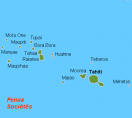
Hobe: karta Societeisl FP, Holger Behr, own work, 21 April 2007
Tahiti, also known historically as O'tahitiis, is the largest island in the Windward group of French Polynesia. It is located in the archipelago of Society Islands and has an approximate population of 178,133 inhabitants, which makes it the most populated island of French Polynesia. The capital of the island is Papeete, located on the northwest coast.
history
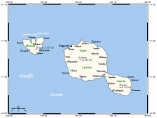
Kelisi: A map of Tahiti and Moorea in the Society Islands, 11 February 2009
Polynesians are believed to have first settled in the Pacific around 4000 years ago. Travelling with wooden double-hulled sailing canoes lashed together with natural fibers and applying their knowledge of the wind, currents and stars, the first intrepid navigators sailed eastward, settling the central island groups of the Cook Islands and French Polynesia between 500BC and 500AD.
In the 16th century, Magellan reached the Tuamotu Islands and the Marquesas. However, the name of Englishman Samuel Wallis is the one most often associated with the European discovery of Tahiti in 1767. The following year, the French navigator Antoine de Bougainville named it 'New Cythera'. A year later, it was the English Captain James Cook's turn to land and take possession of the Society Islands.
At that time, Tahiti and her islands were divided into several chiefdoms and kingdoms. and an increase in the standard of living.
surfing
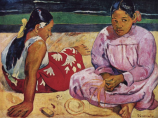
Paul Gauguin, Tahitian Women on the Beach; 1903
Home to some of the best known breaks in French Polynesia and the entire South Pacific. The island of Tahiti is usually the first stop in any trip to French Polynesia and offers multiple options suiting surfers of moderate to the advanced level. Teahupoo is an obvious standout in terms of criticality, but if hurling yourself into 12-foot closeouts doesn’t sound too appealing, rest assumed that the island offers many other options.
weather
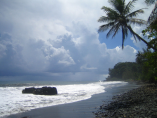
Vilallonga: Tahiti is famous for black sand beaches, 29 September 2006
Weather in Tahiti is tropicial with an average of 27°C and waters of the lagoons at an average of 26-28°C all year round. The warm periods is during November through to April where climate is more humid and winter is from May through to October where climate is slightly cooler and drier.
where to stay

Robert Preinfalk: Hotel Hibiscus, April 2006
Tahiti and the capital city, Papeete, have many large range of accommodation available, from 5 star hotels to older style pensions.
Depending on your needs and preferences, you will find all the choices to suit you -plush lagoonside resorts, hidden guesthouses of the interior, quiet family Pensions, or camping grounds on the island.
For travellers who prefer the simplicity, family pension/hotels could be an the ideal kind of accommodation. It provides a friendly, warm and welcoming service, usually offering meals. Family Hotels are divided into four categories: Bed and Breakfast, Holiday Family Homes, Family-run guest houses, and Family hotels.
Bed and Breakfast: these are furnished bungalows and accommodating up to twelve persons, equipped with bathrooms for sharing.
Holiday family homes: furnished bungalow accommodating up to twenty-seven persons, equipped with bathrooms and kitchenette.
Family-run guest houses: same as the above but additionally providing breakfast and dinner service.
Family hotels: offers full board meal service and 'a la carte'
Several international groups which may be of interest for luxurious stays are InterContinental, Sofitel, Novotel, Meridien, Starwood-Sheraton, Orient Express, Club Med and Radisson.
what to pack
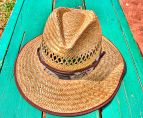
Chefranden: Straw hat, 13 May 2007
Weather is really warm here so besides your camera and your extra memory cards, it is very important to not forget to pack lightweight cotton clothes, 30spf+ sunscreen and a baseball cap or a wide brimmed hat to protect yourself from the strong heated sun. Synthetic fabrics can get hot and sticky in the tropics.






